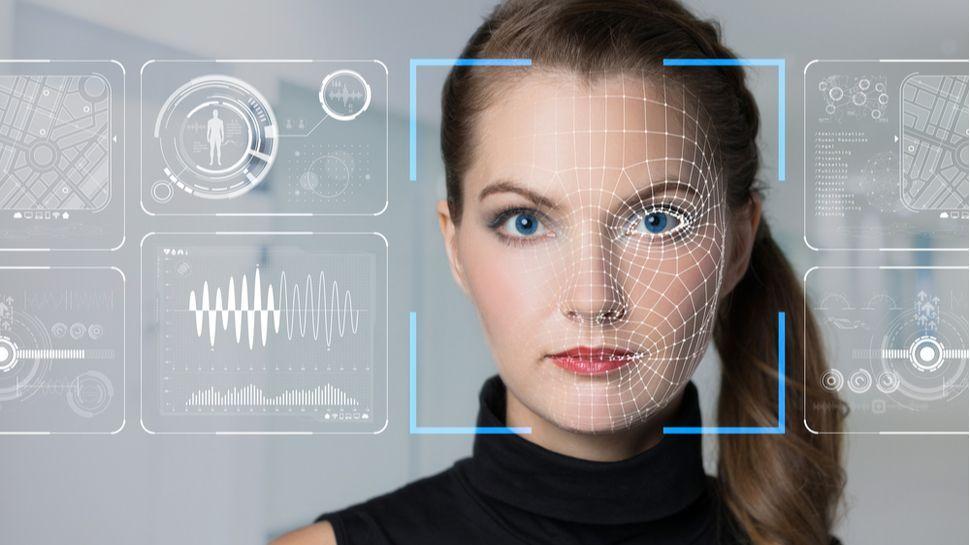AI-Generated Receipts Fuel Surge in Corporate Expense Fraud
4 Sources
4 Sources
[1]
AI-generated receipts make submitting fake expenses easier
Businesses are increasingly being deceived by employees using artificial intelligence for an age-old scam: faking expense receipts. The launch of new image-generation models by top AI groups such as OpenAI and Google in recent months has sparked an influx of AI-generated receipts submitted internally within companies, according to leading expense software platforms. Software provider AppZen said fake AI receipts accounted for about 14 percent of fraudulent documents submitted in September, compared with none last year. Fintech group Ramp said its new software flagged more than $1 million in fraudulent invoices within 90 days. About 30 percent of US and UK financial professionals surveyed by expense management platform Medius reported they had seen a rise in falsified receipts following the launch of OpenAI's GPT-4o last year. "These receipts have become so good, we tell our customers, 'do not trust your eyes,'" said Chris Juneau, senior vice-president and head of product marketing for SAP Concur, one of the world's leading expense platforms, which processes more than 80 million compliance checks monthly using AI. Several platforms attributed a significant jump in the number of AI-generated receipts after OpenAI launched GPT-4o's improved image generation model in March. OpenAI told the Financial Times that it takes action when its policies are violated and its images contained metadata that signaled they were created by ChatGPT. Creating fraudulent documents previously required skills in photo editing or paying for such services through online vendors. The advent of free and accessible image generation software has made it easy for employees to quickly falsify receipts in seconds by writing simple text instructions to chatbots. Several receipts shown to the FT by expense management platforms demonstrated the realistic nature of the images, which included wrinkles in paper, detailed itemization that matched real-life menus, and signatures. "This isn't a future threat; it's already happening. While currently only a small percentage of non-compliant receipts are AI-generated, this is only going to grow," said Sebastien Marchon, chief executive of Rydoo, an expense management platform. The rise in these more realistic copies has led companies to turn to AI to help detect fake receipts, as most are too convincing to be found by human reviewers. The software works by scanning receipts to check the metadata of the image to discover whether an AI platform created it. However, this can be easily removed by users taking a photo or a screenshot of the picture. To combat this, it also considers other contextual information by examining details such as repetition in server names and times and broader information about the employee's trip. "The tech can look at everything with high details of focus and attention that humans, after a period of time, things fall through the cracks, they are human," added Calvin Lee, senior director of product management at Ramp. Research by SAP in July found that nearly 70 percent of chief financial officers believed their employees were using AI to attempt to falsify travel expenses or receipts, with about 10 percent adding they are certain it has happened in their company. Mason Wilder, research director at the Association of Certified Fraud Examiners, said AI-generated fraudulent receipts were a "significant issue for organizations." He added: "There is zero barrier for entry for people to do this. You don't need any kind of technological skills or aptitude like you maybe would have needed five years ago using Photoshop."
[2]
'Do not trust your eyes': AI generates surge in expense fraud
Businesses are increasingly being deceived by employees using artificial intelligence for an age-old scam: faking expense receipts. The launch of new image-generation models by top AI groups such as OpenAI and Google in recent months has sparked an influx of AI-generated receipts submitted internally within companies, according to leading expense software platforms. Software provider AppZen said fake AI receipts accounted for about 14 per cent of fraudulent documents submitted in September, compared with none last year. Fintech group Ramp said its new software flagged more than $1mn in fraudulent invoices within 90 days. About 30 per cent of US and UK financial professionals surveyed by expense management platform Medius reported they had seen a rise in falsified receipts following the launch of OpenAI's GPT-4o last year. "These receipts have become so good, we tell our customers, 'do not trust your eyes'," said Chris Juneau, senior vice-president and head of product marketing for SAP Concur, one of the world's leading expense platforms, which processes more than 80mn compliance checks monthly using AI. Several platforms attributed a significant jump in the number of AI-generated receipts after OpenAI launched GPT-4o's improved image generation model in March. OpenAI told the Financial Times that it takes action when its policies are violated and its images contained metadata that signalled they were created by ChatGPT. Creating fraudulent documents previously required skills in photo editing or paying for such services through online vendors. The advent of free and accessible image generation software has made it easy for employees to quickly falsify receipts in seconds by writing simple text instructions to chatbots. Several receipts shown to the FT by expense management platforms demonstrated the realistic nature of the images, which included wrinkles in paper, detailed itemisation that matched real-life menus, and signatures. "This isn't a future threat; it's already happening. While currently only a small percentage of non-compliant receipts are AI-generated, this is only going to grow," said Sebastien Marchon, chief executive of Rydoo, an expense management platform. The rise in these more realistic copies has led companies to turn to AI to help detect fake receipts, as most are too convincing to be found by human reviewers. The software works by scanning receipts to check the metadata of the image to discover whether an AI platform created it. However, this can be easily removed by users taking a photo or a screenshot of the picture. To combat this, it also considers other contextual information by examining details such as repetition in server names and times and broader information about the employee's trip. "The tech can look at everything with high details of focus and attention that humans, after a period of time, things fall through the cracks, they are human," added Calvin Lee, senior director of product management at Ramp. Research by SAP in July found that nearly 70 per cent of chief financial officers believed their employees were using AI to attempt to falsify travel expenses or receipts, with about 10 per cent adding they are certain it has happened in their company. Mason Wilder, research director at the Association of Certified Fraud Examiners, said AI-generated fraudulent receipts were a "significant issue for organisations". He added: "There is zero barrier for entry for people to do this. You don't need any kind of technological skills or aptitude like you maybe would have needed five years ago using Photoshop."
[3]
Workers are scamming their employers using AI-generated fake expense receipts
False receipts generated for expense reports are costing employers The increasing popularity of image, video, and document generation tools are unsurprisingly ushering in a new era of fraud for businesses and consumers alike. New research has now claimed businesses are seeing an increase in AI-generated fake expense receipts which are proving incredibly difficult to spot. Expense software platform AppZen noted these AI generated expenses now account for 14% of fraudulent documents submitted in September 2025. This may not sound like a lot, but is an increase from 0% in 2024. The findings are seconded by fintech firm Ramp, which claims to have flagged over $1 million worth of fraudulent invoices in the last 90 days. There have been enough expense scandals to know that false expenses are not unheard of, but AI is making them so much more convincing - creating a lot of extra work for businesses in verifying them. Receipts aren't complicated documents, so falsifying them doesn't require any particular skill, especially with the help of AI. So much so that human reviewers are often unable to distinguish between AI generated receipts and real ones. "These receipts have become so good, we tell our customers, 'do not trust your eyes'," said Chris Juneau, senior vice-president and head of product marketing for SAP Concur. This means, of course, another expense for businesses. Your business may soon have to deploy a software that scans the metadata of the receipt submitted - although even this can be removed, so there's no clear-cut solution here. AI is now being pushed into almost every area of western life, and complicating the roles of supervisors worldwide. With millions of students even using AI to write their papers that is in some instances undetectable by software - this has created an impossible task for teachers and schools. - highlighting just how widespread this issue has become. With AI becoming increasingly difficult to spot, powering a new era of fraud across all industries, it's difficult to envision a solution that doesn't involve most of the world going back to pen and paper or physical media just to prove authenticity.
[4]
Phony AI-Created Receipts Become Real Problem for Businesses | PYMNTS.com
By completing this form, you agree to receive marketing communications from PYMNTS and to the sharing of your information with our sponsor, if applicable, in accordance with our Privacy Policy and Terms and Conditions. The rise of new image generation models from companies like Google and OpenAI have led to a wave of AI-generated receipts submitted in-house, the Financial Times (FT) reported Sunday (Oct. 26), citing interviews from leading expense software platforms. For example, software provider AppZen said fake AI receipts accounted for roughly 14% of all fraudulent documents submitted last month, compared to zero last year. The FinTech Ramp said its new software caught more than $1 million in fraudulent invoices within 90 days. And around 30% of the British and American financial professionals surveyed by expense management platform Medius reported they had seen an uptick in falsified receipts after the launch of OpenAI's GPT-4o in 2024. "These receipts have become so good, we tell our customers, 'Do not trust your eyes,'" said Chris Juneau, senior vice-president and head of product marketing for expense platform SAP Concur, which processes more than 80 million compliance checks per month using AI. Several platforms pointed to a significant jump in the number of AI-generated receipts following the debut of GPT-4o's improved image generation model in March. OpenAI told the FT that it takes action when its policies are violated and its images contain metadata that indicate they were created using ChatGPT. The FT noted that there was a time when someone would need photo editing skills -- or the willingness to pay an online vendor -- to create a fraudulent document. Now, free and accessible image generation software allows employees to quickly falsify receipts in seconds by giving simple text commands to chatbots. Expense management platforms showed the news outlet several receipts featuring realistic details like wrinkles in paper, detailed itemization in line with real-life menus, and signatures. It's part of a larger problem, as PYMNTS wrote earlier this year. "Generative AI has transformed financial fraud, making it more sophisticated and harder to detect," that report said. "While businesses harness its capabilities for efficiency, cybercriminals exploit it to craft convincing fraudulent schemes." Modern AI-driven attacks aren't confined to phishing emails, as fraudsters now use voice cloning and deepfake videos to impersonate executives, duping employees into authorizing large fund transfers. "The accessibility of generative AI tools means that even low-level scammers can produce high-quality forgeries, blurring the lines between genuine and fake communications," PYMNTS added.
Share
Share
Copy Link
The rise of AI image generation tools has led to a significant increase in fraudulent expense claims using AI-generated receipts. Companies are struggling to detect these sophisticated fakes, forcing them to adopt AI-powered detection methods.
AI-Generated Receipts: A New Era of Corporate Fraud
The rise of sophisticated AI image generation tools from OpenAI and Google has sparked a significant increase in corporate expense fraud
2
. Employees are now fabricating highly convincing expense receipts, challenging traditional verification. This trend compels businesses to implement advanced countermeasures, highlighting AI's dual capacity to both facilitate and combat financial deception.
Source: FT
Escalating Scale and Detection Challenges
Statistics reveal an alarming surge. AppZen reported a rise from zero to 14% in fake receipts by September 2025
1
. Fintech firm Ramp identified over $1 million in fraudulent invoices within 90 days2
. These AI-created fakes, often indistinguishable from genuine documents with realistic textures and itemization, make human detection nearly impossible. Chris Juneau of SAP Concur advises, "do not trust your eyes"2
. The free, accessible nature of AI tools has democratized this fraud, as noted by Mason Wilder of the Association of Certified Fraud Examiners1
.
Source: TechRadar
Related Stories
AI-Powered Defense Mechanisms
To counter this evolving threat, businesses are heavily investing in AI-powered detection systems, moving beyond simple visual checks with multi-faceted analysis:
- Metadata Analysis: Software scans images for hidden metadata indicative of AI generation
2
. - Contextual Verification: AI systems analyze receipts against broader expense data for inconsistencies or suspicious timestamps
2
. - Automated Compliance: Platforms like SAP Concur automate millions of compliance checks monthly, boosting fraud detection accuracy through AI
2
.
This financial deception arms race, extending to voice cloning and deepfake videos, underscores the urgent need for robust AI-driven cybersecurity measures
4
.
Source: PYMNTS
References
Summarized by
Navi
[1]
Related Stories
Recent Highlights
1
AI Chatbots Sway Voters More Effectively Than Traditional Political Ads, New Studies Reveal
Science and Research

2
Google AI glasses set to launch in 2026 with Gemini and Android XR across multiple partners
Technology

3
EU Launches Antitrust Probe Into Google's AI Training Practices and Content Usage
Policy and Regulation








